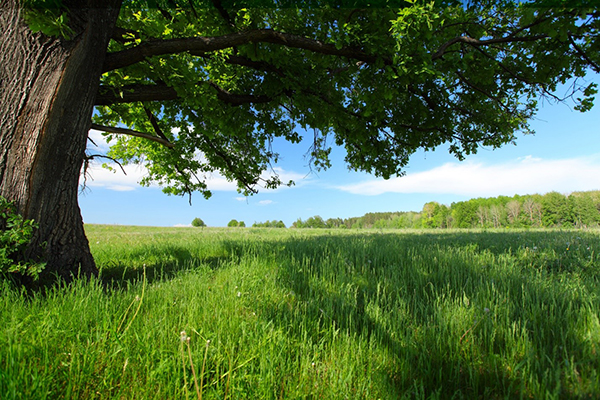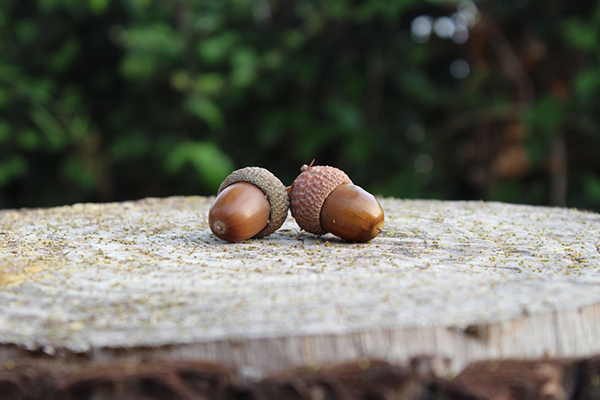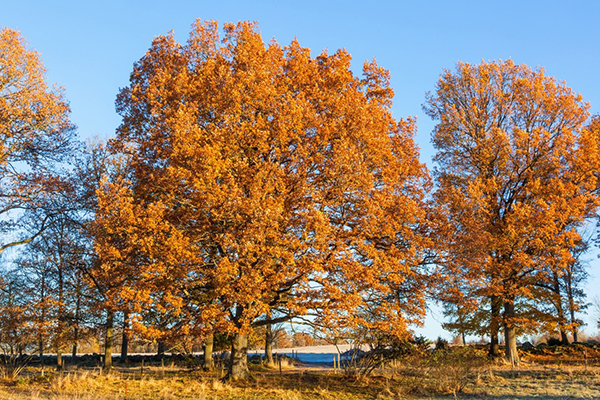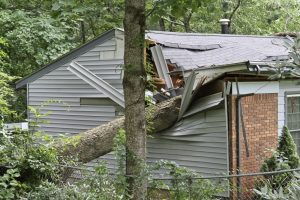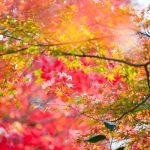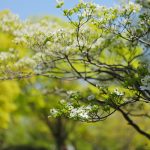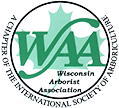At Hendricksen Tree Care, we are not only professional arborists, but also tree enthusiasts who are dedicated to caring for the many types of trees found throughout the Chicago area. For the first feature of our blog series highlighting the many different trees of Chicago, we start with the mighty oak tree. The oak tree has a long history in the Chicago area. Before Chicago was established and developed as a city, oak trees were by far the most common type of tree in the area. There are twenty species of oak tree that are native to Illinois, including the white oak, swamp oak, shingle oak, and Chinkapin oak. In 1907, school children voted to make “native oak” the official state tree of Illinois and in 1973, the white oak became the official state tree.
In this guide, we will cover general information about oak trees, identify oak trees native to the Chicago area, discuss how to care for oak trees, and cover pests and diseases that commonly affect oak trees. If you have a beautiful old oak tree on your property, our arborists at Hendricksen Tree Care provide tree care and maintenance services to protect your oaks against pests and diseases.
Basic Characteristics of Oak Trees
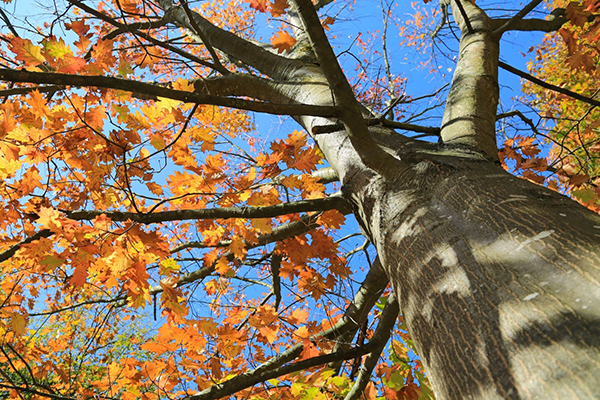
There are over 20 species of oak trees in Illinois, if you are concerned about an oak tree on your property call a professional arborist such as Hendricksen Tree Care today
Oak trees are large trees that are found throughout the world in the Northern Hemisphere including North America, Asia, North Africa, and Europe. There are an estimated 600 species of oak tree that fall under the genus Quercus, and the highest number of oak species is in North America. The United States alone is home to around 90 different oak species, 20 of which are native to Illinois.
Oak trees can grow in different climactic conditions from cool temperate conditions to tropical climates. Most oak species are deciduous, meaning they lose their leaves every year, but there are some species that are evergreens. Oak trees are also monoecious which means that male and female flowers will bloom on the same tree.
The mighty oaks are also an ancient species, mentioned throughout human history in reference to their strength and endurance. Once an oak tree reaches a mature age, depending on the species, can live anywhere from 80 to 500 years.
The following are basic characteristics that can help you identify an oak tree:
- Height: Oak trees generally grow to be 80 feet tall, but their height can range from 50 to 100 feet depending on the species. It can take 20-30 years for an oak tree to fully mature and reach its peak height.
- Diameter: The average diameter of an oak tree is 4½ feet. Some oak trees can have a trunk diameter as large as 7 feet.
- Leaves: The leaves of an oak will look different between different species, but they are almost always arranged in a spiral off the branch. Oak tree leaves can have serrated or smooth edges, and they can have thin elongated shapes, or lobe shapes more similar to that of a maple leaf.
- Flowers: Oak trees produce male and female flowers in the form of catkins, which are flower clusters with no pedals that are cylindrical in shape. The catkins of an oak tree are typically green or purple in color.
- Fruit: The fruit produced by oak trees is the acorn. The acorn is a nut that contains one oak seed and it has a cup-shaped crown called a cupule. Acorns may look slightly different between species of oak trees.
- Bark: The bark also looks different depending on the species of oak, but almost all oak trees have deep, defined ridges in the bark.
Oak Tree Sections
Oak trees are classified under the genus Quercus, and the different types of oak species under this genus are classified into 5 different sections; Quercus, Mesobalanus, Cerris, Protonalanus, and Lobatae. The following sections are those found in the United States:
- Quercus: This section includes white oaks and other similar species native to North America, as well as Asia and Europe. Most oak tree species in the Chicago area fall under this section.
- Protobalanus: This section includes the canyon live oak and similar species and are commonly found in the southwest U.S.
- Lobatae: This section includes red oaks that are found in North and Central America, as well as northern regions of South America.
Hybridization
It is common for oak trees to be hybrids of two different species of oak from the same section. The Quercus oaks, including the white oak, swamp oak, and Chinkapin oak are the most likely species to be hybrids due to wind pollination. These oak species can be pollinated by different species of oak in the same section because they do not distinguish the difference in pollination. Hybridization among oaks can also result from ecological stress factors.
Native Illinois Oak Trees
As mentioned above, there are approximately 20 species of oak native to Illinois. The following are brief descriptions of several of the most common oak trees in the Chicago area:
- White Oaks: The white oak is the state tree of Illinois and can be found in every county of the state. These oaks usually grow to be about 60 to 70 feet tall, but can be as tall as 100 feet, and their trunk diameter can be between 4 and 7 feet. The leaves of a white oak are lobed with rounded tips. The acorns are greenish in color with a hairy cap, and they are eaten by squirrels, birds, and other local wildlife. White oak bark has light ridges and is grayish in color.
- Swamp White Oaks: Swamp white oaks grow between 50 and 60 feet tall and they have an irregularly shaped crown and slender trunk. Their leaves are lightly lobed and fuzzy on the underside and their acorns are dark brown and grow on fuzzy stalks.
- Shingle Oak: Shingle oaks can grow between 65 and 80 feet tall and start out with a pyramidal crown that becomes more outstretched and rounded with age. The leaves of a shingle oak are slender with smooth edges and they can turn different colors in the fall from dark yellow to red. Its bark has small, yet prominent ridges. Shingle oaks used to be much more prominent in the Chicago region, but they have become scarce because they were once used heavily to build roofing and shingles, hence the name.
- Red Oak: Red oak trees can grow up to 70 feet tall and they develop symmetrical crowns. They get their name from the reddish color that the leaves turn in the fall. The leaves of a red oak are lobed with pointy tips, and the acorns are reddish brown in color. The bark of a red oak has flat ridges that get longer and broader with age.
Threats to Oak Trees – Disease and Insects
The various species of oak trees are vulnerable to several different diseases and pests that can cause damage to the tree. The following are the main threats to oak trees:
Diseases
- Sudden oak death: This disease is caused by a water mold and it is very deadly to oak trees. It causes bleeding sores in the tree bark called cankers and kills the foliage.
- Oak wilt: This is another fungal disease that is especially deadly for red oaks. The foliage on infected trees will begin to discolor and eventually die off the tree.
-

If your oak tree has rot, don’t let it end like this picture. Call a professional arborist like Hendricksen Tree Care
Powdery mildew: Yet another fungal disease that results in spots of white mildew on the affected leaves. The spots will continue to expand and spread throughout the tree.
- Rot: It is common for wood in older oak trees to rot from the inside. Excessive rotting can make the tree dangerously unstable. Unfortunately, Oak trees inflicted with serious rot may need to be removed, especially if close to a residence.
Insects
- Wood-boring insects: There are several types of wood-boring insects that literally eat away at the wood inside the tree. These insects can cause serious damage inside the tree before their presence is apparent.
- Galls: Galls are abnormal growths on oak trees that are typically caused by a parasite such as an insect, mite, bacteria, or fungus. There are many different types of galls that can affect oak trees and they can be caused by moths, scale insects, and certain wasps.
Oak Tree Care – Plant an Oak Tree Today!
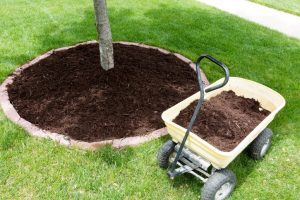
Plant a new oak tree in your Chicagoland yard this Spring, and be sure to put mulch around the base to help retain moisture
Providing the right care and maintenance for your oak trees can help prevent harmful diseases and insect infestations. Oak trees are fairly low maintenance, they just need plenty of space to grow and should be planted in an area with well-drained soil and plenty of sun light. The following tips will help you care for your oak trees:
- Watering: Oak trees are resistant to dry conditions so it is not necessary to water them more than 2 or 3 times during the summer if conditions have been dry. When you do water your oak trees, you should water them gradually throughout the day until the surrounding soil is thoroughly soaked. Do not water an oak tree more than once per month.
- Mulching: Putting mulch around the base of an oak tree will improve the aeration of the soil and help contain moisture and nutrients. The mulch should extend out 4 to 6 feet from the base and should be no more than 4 inches deep.
- Fertilization: Oak trees should be fertilized early in the spring with nitrogen-based fertilizers to help with new growth. You can also fertilize oak trees in season if they are showing signs of a nutrient deficiency.
- Pruning: Pruning oak trees is important to remove dead or dying branches and keep the canopy the right shape. Tree trimming, especially in larger oaks, is also a dangerous job that may be best handled by a professional arborist.
Professional Tree Service for your Oak Trees
Oak trees have been gracing the Chicago area with their beauty since before Chicago was established as a city. If you are considering planting a new tree on your property, planting an oak tree will provide added beauty and shade. However, it is important to make sure your oak trees receive proper care to live long, full lives. At Hendricksen Tree Care, our professional arborists can provide complete tree care services including fertilization, pruning, and treatment for insects and diseases to help your trees live and grow to their full potential. We are passionate about caring for the trees that are native to the Chicago area. We serve the northwest suburbs of Chicago, IL including Arlington Heights, Northbrook, Palatine, Park Ridge, and surrounding cities.
